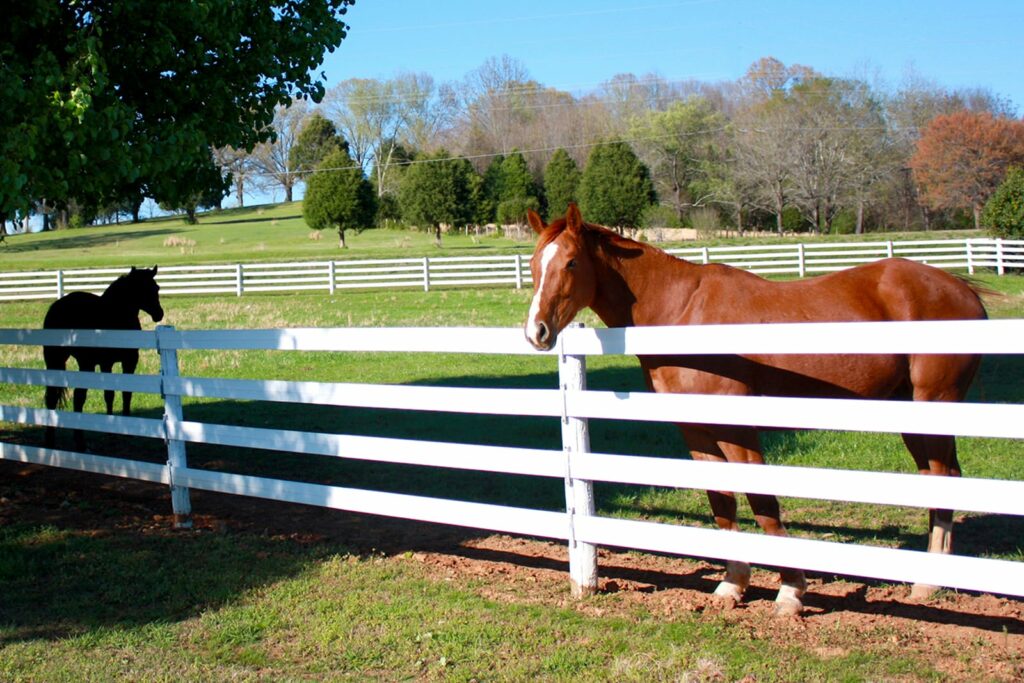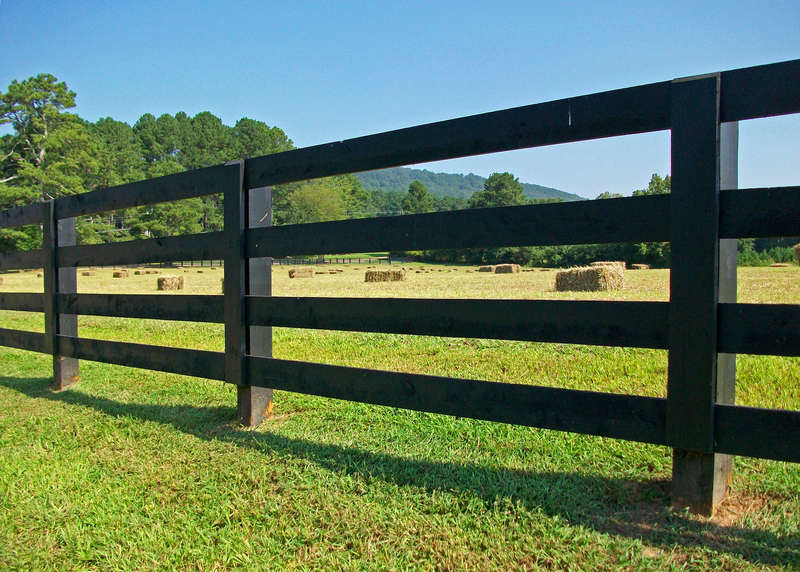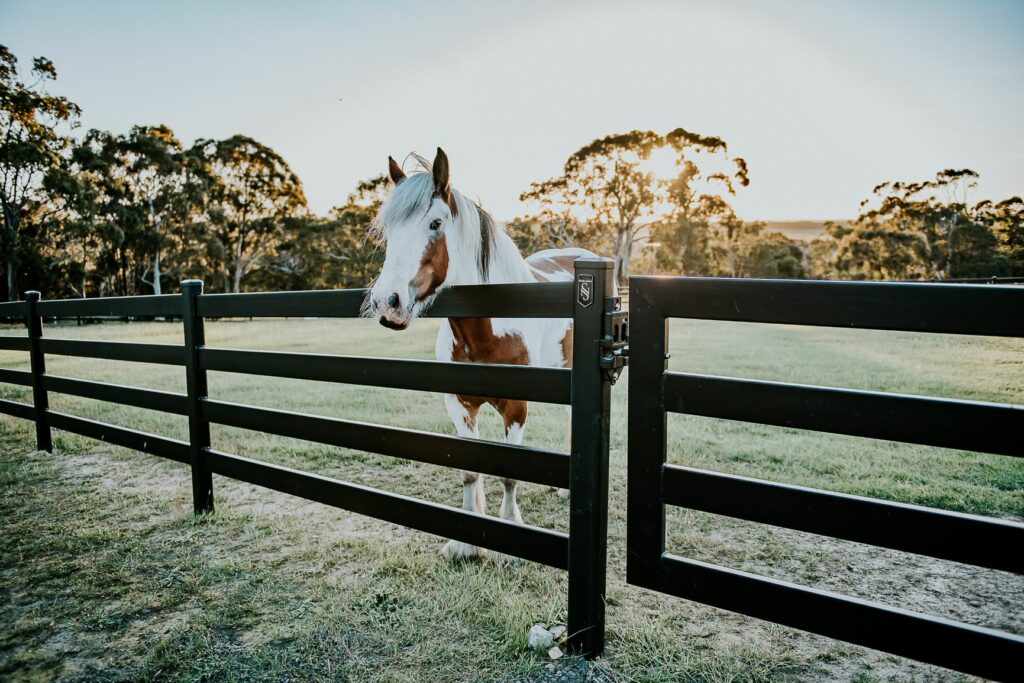Stock & Noble

Top 4 problems with Steel Post and Rail Fencing and their solutions
- BY Tripti Kakkar
Steel fencing is strong, easier to maintain, fire resistant, impervious to termites, resistant to mould, durable, 100% recyclable and horseproof.
Best of all, unlike Timber, there is no room for unwanted surprises year after year. If you want, you can learn more about the difference between Timber and Steel horse fences.
We can go on and on about the marvels of Steel Post and Rail fencing. However, this article isn’t about the greatness of Steel fencing, rather it’s about exactly the opposite. We will discuss the biggest problems of Steel Post and Rail fencing in Australia and their solutions.
At Stock & Noble, we are the exclusive suppliers of Buckley Steel Post and Rail fencing system in Australia and New Zealand. It is a well-engineered Steel fencing system. Saying that we believe that no Post and Rail fence is perfect. With our years of experience, we have learned and understood the pros and cons of using Steel fencing in Australia.
The purpose of this article is to educate you and give that full disclosure of all that could possibly go wrong with your Steel fencing. We won’t stop at problems but will also give you solutions that can help you to overcome these issues.
By the end of this article, you should be well prepared for any challenges that Steel Post and Rail fencing might present.
The most common problems with Steel Fencing and solutions:
- Problem: Steel fencing is prone to rust. (Solution: Apply a protective paint, stop steel from contacting steel, and prevent water retention.)
- Problem: Steel post and rail fencing is unsafe for horses. (Solution: Use rails that are flexible enough to buckle.)
- Problem: Steel fencing has fewer design options in the premium segment. (Solution: Choose Buckley Steel Post and Rail or design your own using RHS/SHS.)
- Problem: Steel Pipe fencing needs to be painted. (Solution: Buy pre-powdered Steel Post and Rail fencing.)
Problem 1: Steel fencing is prone to rust
Rust is undoubtedly the biggest enemy of Steel. This is one of the major concerns of any horse property owner who is considering a Steel Post and Rail fencing option.
If you too are in a similar boat, then you must know that the problem arises because of two major reasons – the penetration of steel and the retention of water.
The rust first starts building up at points where Steel Rails and Posts are connected, typically through welding or the use of screws.
The second area of concern is the place where posts are concreted in, the water can seep in or the reaction between lime and steel can begin the rusting process.
How to stop Steel fencing from rusting
There are 4 ways to prevent and stop the corrosion in your Steel Fencing.
- Apply high-quality paint: Raw Cattle Rail can be painted with premium quality steel paints to offer protection against rust and corrosion. The other solution could be to purchase pre-powdered Steel Post and Rail fencing.
- Stop steel touching steel: Find a fencing system where welding or screws aren’t required for fixing rails to the post. If it’s a closed fencing system, where steel is neither penetrated nor meets steel, the fencing will have maximum protection against rust.
- Look for added protection: You can add an epoxy layer over steel fencing to protect it from concrete and lime. Alternately check with your fencing contractor or supplier for a Steel Post and Rail fencing system which comes with this coating already applied to the product.
- Proper water drainage: During the post installation, make sure the concrete is poured in and shaped so that water drains away and does not collect around the posts to prevent steel from corroding. Also, allow the bottom of the post to sit on the soil so that if water does get trapped inside it, it can drain out.
Problem 2: Steel fencing isn’t safe for horses
When it comes to your property, horses are the heart and soul of it. They are your best friends, and we just cannot compromise on their safety, whatsoever. Unfortunately, in some cases Steel Post and Rail fencing has proven to be a safety hazard where a panicked horse ran into the rigid fence and ended up getting hurt.
While we love Steel fencing for its rigidity and strength, the same qualities can work against it. The welding and screws end up making the Steel Post and Rail too strong for the horses. This means that the fences don’t give way or buckle under the impact of a speeding horse. Such forceful collision has the possibility of seriously injuring the animal.
How to make Steel fencing safer for horses
If you want to ensure your Steel Post and Rail fencing is safe for horses, then find an option that ticks a few checkboxes.
- Steel Post and Rail fencing should have smooth, round edges and no nails, buckles, screws or fasteners.
- Look for a rail with less wall thickness that can buckle on impact. If the rail has some additional flexibility it won’t come in the way of the speeding horse but would rather buckle and pop out. However, it should still be strong enough to absorb 99% of the bumps, kicks and other incidents.
- Check with your fencing contractor or supplier for a Steel Post and Rail that’s been specifically designed with horse safety in mind.
For example, Buckley Steel Posts and Rails are neither welded, nor screwed. They are connected through a lock spacer inside the post and rubber grommets. Rubber offers some flexibility to the rail and in the case of a panicked horse, its energy is sufficient to cause the rails to bend, buckle, and release from the posts with no breakage or splinters. This prevents serious injury to the horse, unlike with welded steel fence rails or masonry-style systems.
Problem 3: Steel fencing doesn’t have enough design options for high-end properties
If you are searching for a gorgeous looking Steel Post and Rail fencing option for your horse property, you would definitely agree with us.
In the case of Timber, there are tons of hardwood options that can make your property look amazing.
Unfortunately, if you want to move away from wood and want the benefits of Steel fencing, there are hardly any suppliers that can promise you Steel fencing solutions to create a beautiful equine property.
In the past, property owners have tried investing a lot of time and money to create custom designs from ordinary Cattle Rail fencing to make it look different and premium. However, in some cases, the results did not match their vision and led to further disappointment.
How to create beautiful horse property with steel fencing
If you are looking for a well-designed Steel Post and Rail fencing option thankfully there are a couple of solutions:
- Buckley Steel Post and Rail: This American-designed and globally proven Steel fencing is now available in Australia and New Zealand. As a design-driven product, its main material is steel, which has been engineered over years to ensure good performance.
If you want, you can request a free sample and find out if the aesthetics and engineering suit you and your property. However, this option is going to cost you more than the Steel pipe fencing.
- Rectangular Hollow Section or RHS: If you have enough time and money to invest in building your own Steel Fencing, then consider using Rectangular Hollow Section steel that allows you to choose different sizes to customise your fence. With patience and investment, they can look like traditional Timber Posts and Rails. However, since it’s not a common practice to use RHS, they are tough to source and quite expensive.
Problem 4: Steel Pipe fencing needs painting
If Cattle Rail fencing is your preferred option, you must know that it comes only in steel grey colour. To make it look better and elevate the overall aesthetics of your horse property you may need to paint these fences.
The biggest problem is that the painting project will cost you additional time, money and energy. We recommend you hire a professional and get a good quality steel fence paint. Learn more about how to paint steel post and rail fencing on your horse property.
How to avoid painting Steel Post and Rail fencing?
If you want to save your precious time and money on painting Steel Post and Rail fences, then the ideal solution is to buy pre-powdered Cattle Rail like Top Rail from Blue Dog fences or Post and Rail from Dunn and Farrugia. Or you can choose an architectural grade powder coated fencing system like Buckley Steel Fence.
Is Steel Post and Rail Fencing right for your horse property?
You just learnt about the 4 biggest problems of Steel Post and Rail fencing. The good news is you also know how to solve them in the best possible ways.
Now you are well-prepared to tackle rust, ensure horse safety, find high-end Steel fencing options and get an alternative to painting your Steel Post and Rail fences.
You might have noticed that Steel Post and Rail fencing has its own set of pros and cons. With modern Steel Fencing solutions being introduced in Australia and New Zealand, it’s possible to considerably minimise the risk of these cons.
In fact, it’s the perfect time to get the Steel fencing that’s designed to be different and lasts forever. You can explore the different Steel Post and Rail fencing options available in Australia and find the best steel fence for your horse property. Learn all about the different types of Steel fencing, features, benefits, and cost, and choose the one that’s right for you and your property.
We think it’s also important to know more about the factors that you must consider before buying your Steel Post and Rail fence.
If you have any more questions on how to choose, purchase or maintain Steel Post and Rail fences, we are there to guide you. Please book a one-to-one consultation with our fencing expert and ask away. All we want is to help and guide horse property owners across Australia and New Zealand to build the most beautiful equine properties that they are proud of.



